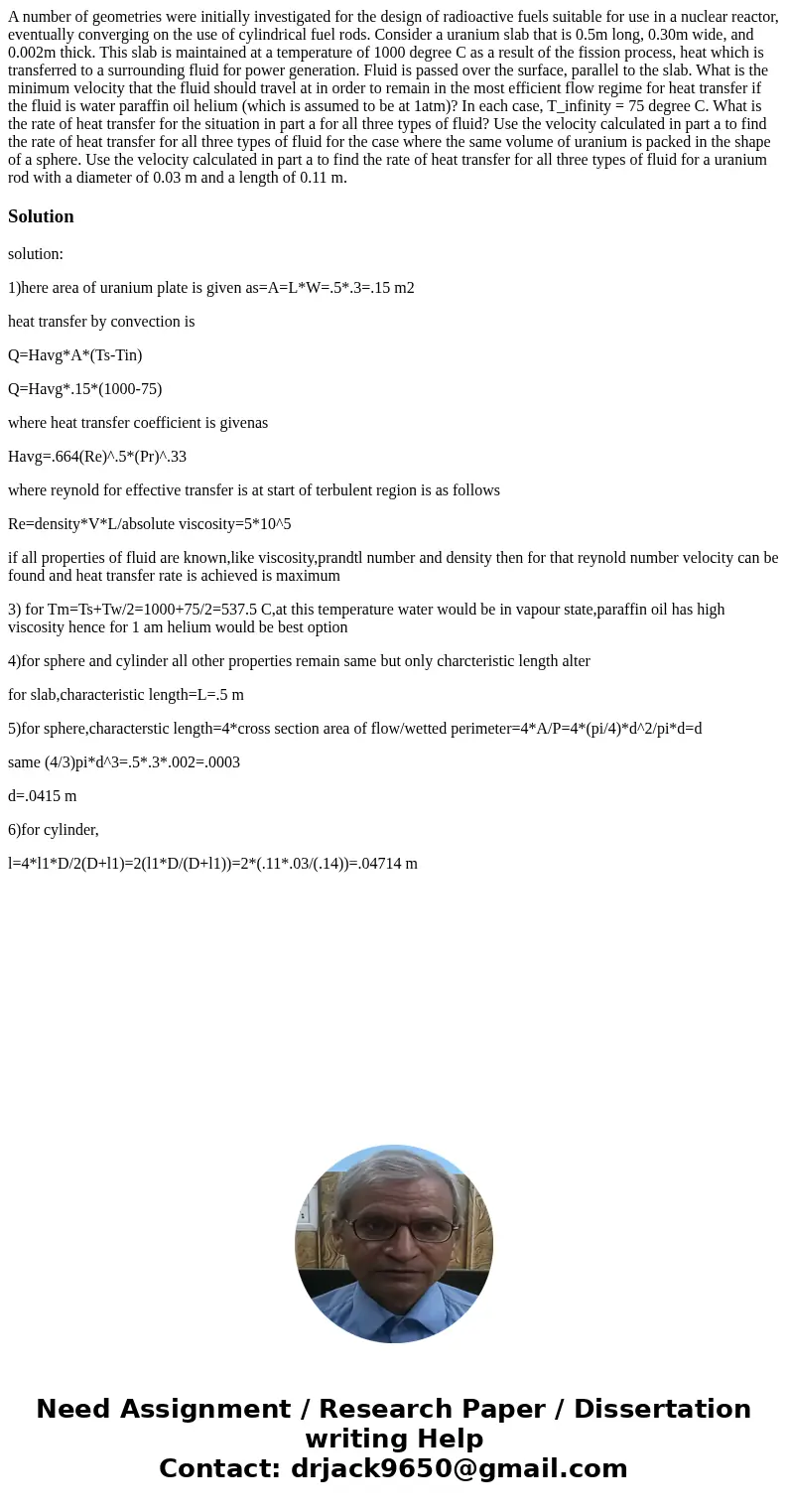A number of geometries were initially investigated for the design of radioactive fuels suitable for use in a nuclear reactor, eventually converging on the use of cylindrical fuel rods. Consider a uranium slab that is 0.5m long, 0.30m wide, and 0.002m thick. This slab is maintained at a temperature of 1000 degree C as a result of the fission process, heat which is transferred to a surrounding fluid for power generation. Fluid is passed over the surface, parallel to the slab. What is the minimum velocity that the fluid should travel at in order to remain in the most efficient flow regime for heat transfer if the fluid is water paraffin oil helium (which is assumed to be at 1atm)? In each case, T_infinity = 75 degree C. What is the rate of heat transfer for the situation in part a for all three types of fluid? Use the velocity calculated in part a to find the rate of heat transfer for all three types of fluid for the case where the same volume of uranium is packed in the shape of a sphere. Use the velocity calculated in part a to find the rate of heat transfer for all three types of fluid for a uranium rod with a diameter of 0.03 m and a length of 0.11 m.
solution:
1)here area of uranium plate is given as=A=L*W=.5*.3=.15 m2
heat transfer by convection is
Q=Havg*A*(Ts-Tin)
Q=Havg*.15*(1000-75)
where heat transfer coefficient is givenas
Havg=.664(Re)^.5*(Pr)^.33
where reynold for effective transfer is at start of terbulent region is as follows
Re=density*V*L/absolute viscosity=5*10^5
if all properties of fluid are known,like viscosity,prandtl number and density then for that reynold number velocity can be found and heat transfer rate is achieved is maximum
3) for Tm=Ts+Tw/2=1000+75/2=537.5 C,at this temperature water would be in vapour state,paraffin oil has high viscosity hence for 1 am helium would be best option
4)for sphere and cylinder all other properties remain same but only charcteristic length alter
for slab,characteristic length=L=.5 m
5)for sphere,characterstic length=4*cross section area of flow/wetted perimeter=4*A/P=4*(pi/4)*d^2/pi*d=d
same (4/3)pi*d^3=.5*.3*.002=.0003
d=.0415 m
6)for cylinder,
l=4*l1*D/2(D+l1)=2(l1*D/(D+l1))=2*(.11*.03/(.14))=.04714 m

 Homework Sourse
Homework Sourse